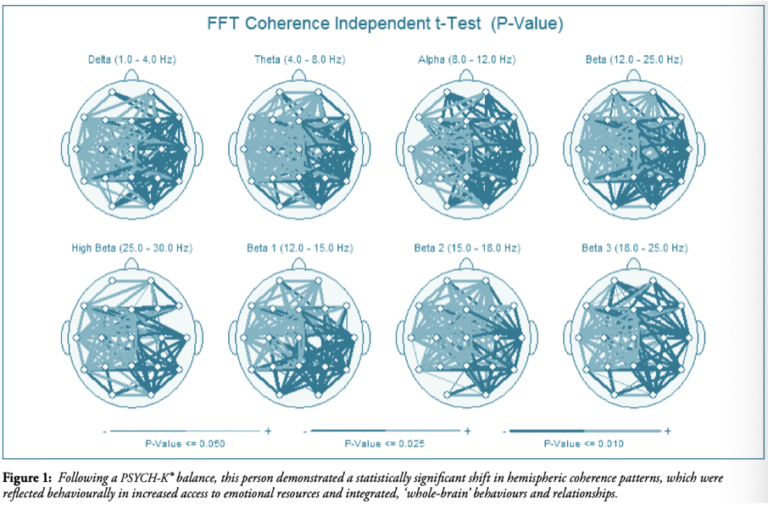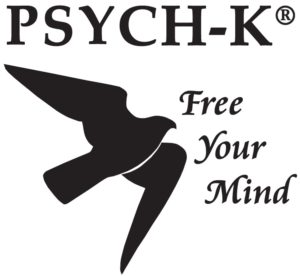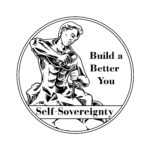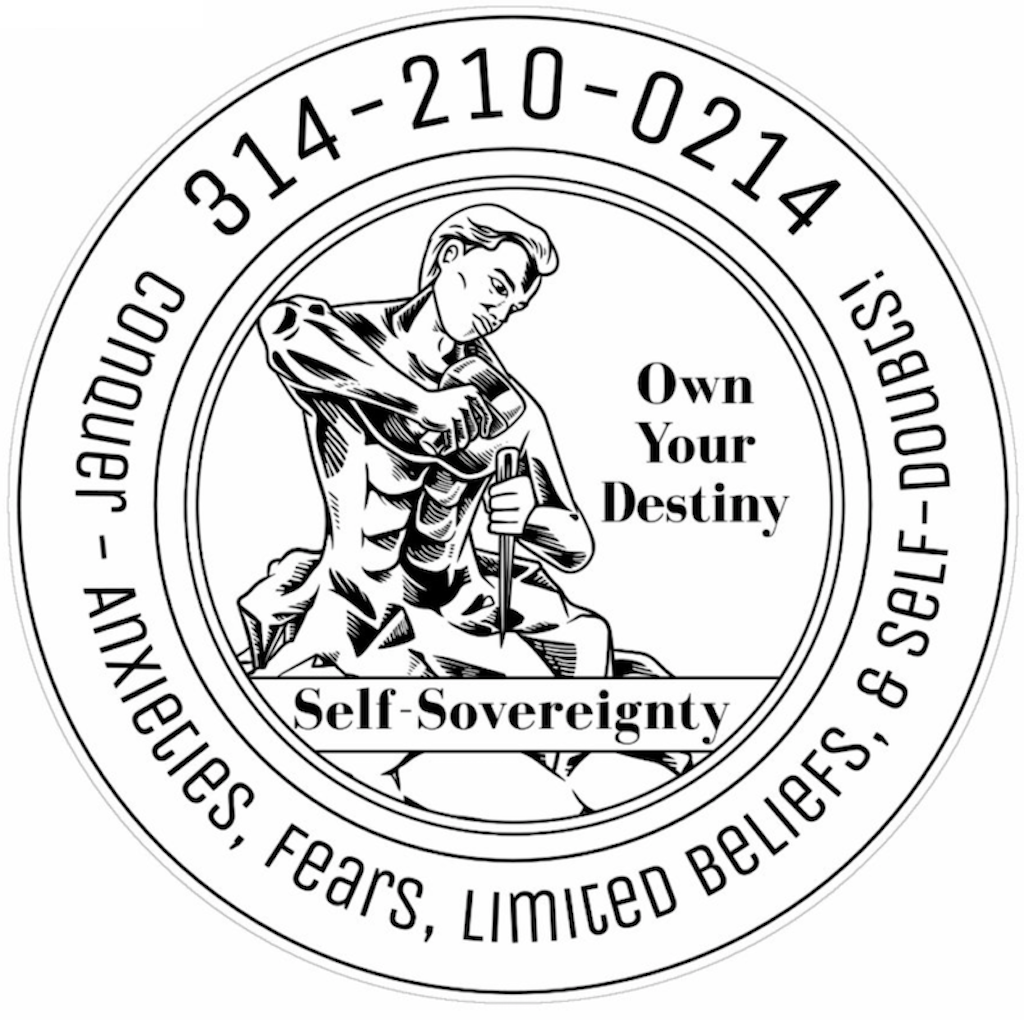Simply put, a “whole brain state” refers to a state of mind or consciousness in which all areas of the brain are working together harmoniously and efficiently.
It implies a state of balanced cognitive functioning where the different regions of the brain, responsible for various functions such as logic, creativity, emotion, and problem-solving, are synchronized and contributing optimally to one’s mental processes.
In neuroscience and psychology, the brain is divided into different regions and networks that are responsible for various cognitive and emotional functions.
These regions work together in complex ways to support our overall cognitive and emotional well-being.
A whole brain state would suggest that these regions are effectively communicating and cooperating, leading to enhanced cognitive abilities, emotional regulation, and overall mental clarity.
This is also described as left-brain, right-brain balance, or being in-congruence.
Now before we go on, it’s important to take a second to note that the concept and term “whole brain state” is just recently starting to be recognized in science.
It’s often used in self-help or personal development to describe a state of mental clarity, focus, and balance, where an individual feels at their cognitive and emotional best.
Techniques like meditation, mindfulness, and certain cognitive training exercises (As we’ll discuss later) are said to help people achieve a more harmonious and integrated state of mind, potentially approaching what is referred to as a “whole brain state.”
Keep in mind, some of these same techniques such as meditation and mindfulness have also been around for centuries.
So perhaps it’s more appropriate to say modern science is just recently starting to understand the overall power and importance of achieving a whole-brain mindset.
And more importantly, we now have more advanced technology to “witness” and document the science behind the whole-brain state process.
For example, in a research article published by Jeffery L Fannin, the then Director of the Center of Cognitive Enhancement and Rob Williams, the originator of PSYCH-K®, the authors demonstrated the value the Whole-Brain State, and its role in the evolution of human consciousness.

This peer-reviewed publication was based on brain mapping research conducted in 2012 and demonstrates the bilateral, symmetrical brain wave pattern created by using PSYCH-K® to achieve a whole-brain state.

Its benefits are enumerated in the research paper and are referenced in three different publications spanning three different disciplines including neuroscience, psychotherapy and business.
More recently Dr. Joe Dispenza and his team have demonstrated similar changes in brain wave patterns achieved through deep state meditation.
In his remarkable research, Dr Dispenza was able to demonstrate how some individuals where even able to achieve supernatural transformations through the power of self-healing.
But before we get too deep into the overall health and wellbeing opportunities associated with achieving a whole-brain state, let’s first take a minute to explore the differences between the conscious mind and the subconscious mind.
Conscious vs. Subconscious Mind:
The conscious mind and the subconscious mind are two components of the mind that work together to shape our thoughts, feelings, and behaviors.
They differ in terms of their functions, awareness, and accessibility:
Conscious Mind:
- The conscious mind is the part of your mind that you are aware of and actively using at any given moment. It’s associated with your immediate awareness of thoughts, perceptions, and sensations.
- The conscious mind has a relatively limited capacity to process information and focus on a few things at a time. It’s responsible for tasks like logical reasoning, decision-making, and critical thinking.
- You have direct, voluntary control over your conscious mind. You can choose to focus on specific thoughts, make conscious decisions, and engage in deliberate actions.
The information in the conscious mind is stored in short-term memory, which means it’s accessible for a brief period. If not reinforced or transferred, it may fade from awareness relatively quickly.
Now let take a look at the Subconscious Mind:
- The subconscious mind operates below the level of conscious awareness. It contains information and processes that are not readily accessible to your conscious mind. Many of your beliefs, habits, and automatic responses are influenced by the subconscious.
- The subconscious mind has a much larger capacity for storing information and memories, including long-term memories and emotional experiences.
- The subconscious mind controls many automatic and habitual processes, such as regulating bodily functions (e.g., heart rate, digestion), as well as storing and retrieving information effortlessly.
- The subconscious mind also influences behavior. Beliefs, attitudes, values, and past experiences stored in the subconscious mind can significantly influence your behavior, often without your conscious awareness.
- Emotions and intuitive feelings often arise from the subconscious mind. It can provide quick responses based on your past experiences and emotions.
As you can image, the relationship between the conscious mind and subconscious mind is extremely complex.
Information from the subconscious can influence conscious thoughts and decisions, and conscious thoughts can, in turn, shape and modify beliefs and habits in the subconscious.
The balance and integration of both the conscious mind and the subconscious mind are important for mental health, as well as overall health and well-being.
A Mindset Transformation
As mentioned earlier, clinical research can now demonstrate specific examples of how some individuals have been able to use techniques such as PSYCH-K® and meditation to achieve supernatural transformations through the power of self-healing.
In his book, “The Power of Your Subconscious Mind” Dr. Joseph Murphy explains, “Your subconscious mind is the builder of your body and can heal you.
Lull yourself to sleep every night with the idea of perfect health, and your subconscious, being your faithful servant, will obey you.”

A just a couple more key take-aways from this amazing book:
- “Your subconscious mind controls all the vital processes of your body and knows the answers to all problems.”
- “Whatever thoughts, beliefs, opinions, theories, or dogmas you write, engrave, or impress on your subconscious mind, you shall experience them as the objective manifestation of circumstances, conditions, and events.”
- Basically saying, “What you write on the inside, you will experience on the outside.”
- And finally, “Change your thought, and you change your destiny.”
Dr. Murphy goes on to provide examples of how to get the results you want, using the power of your subconscious mind along with a deep belief in a high-power and the power of prayer.
As a bonus, he includes real-world testimonials from individuals whom have experienced life altering change.
As I mentioned earlier, science is just beginning to validate the benefits of achieving a whole-brain state and the power of the subconscious mindset.
The interesting thing to note here, Dr. Murphy published his book in 1963!
As a preferred PYSCH-K® facilitator, I can attest to the power of the whole-brain state as an integral part of the overall process to transition anxieties, fears, limiting beliefs, and self-doubts to better align their overall mindset with their current aspirations, desires, and goals.

If you set the right intention, and follow a prescribed process to establish a congruent or whole-brain mindset, you can achieve life-altering results. And sometimes within just minutes!
Of course, in many cases you will still have to do additional work, whether that means journaling daily for gratitude, eating healthier, or simply walking for exercise.
WHOLE BRAIN POSTURE
In the late 80’s, Paul E. Dennison, Ph.D. published a book entitled Brian Gym®: Simply Activities for Whole-Brain Learning.
Working with his co-writer and wife Gail E. Dennison, they identified twenty-six activities designed to enhance brain function by establishing a whole-brain state.
Many of these techniques continue to be used in education today to help students improve through movement-based learning as well as short-term, and long-term memory.
In addition, several of more advanced postures are also used in various natural healing modalities including PSYCH-K®.
These postures are designed to assist an individual with relaxing the conscious mind, while setting an intention for personal mindset changes at the subconscious level.
This is where the value of a seasoned mindset coach can assist an individual to facilitate transformation at the subconscious mindset. This includes helping to craft a well-defined goal statement that resonates with the individual at the subconscious level. Then, guiding the member through the process using an appropriate posture or positioning that allows an individual to enter into a whole-brain set while setting a specific intention for change.
It’s important to note, the mindset coach is not healing or changing the individual. Only the individual can change a belief within their subconscious mindset. Rather, the mindset coach is simply facilitating science-based process. The individual must belief in the change. They also must believe they have the power to make personal change and must believe their GOD or higher power wants them to change for the better.
In time, you can learn to master some specific techniques to facilitate subconscious change just as you can learn to master mindfulness meditation.
I hope you found this video helpful and if you did, please hit the Like button and Subscribe to the channel. And feel free to leave a comment, I’d love to hear from you!



Thanks for reading and remember, The Answer is Within You, to Build a Better You, and to Own Your Destiny.
Take Care and God Bless!
